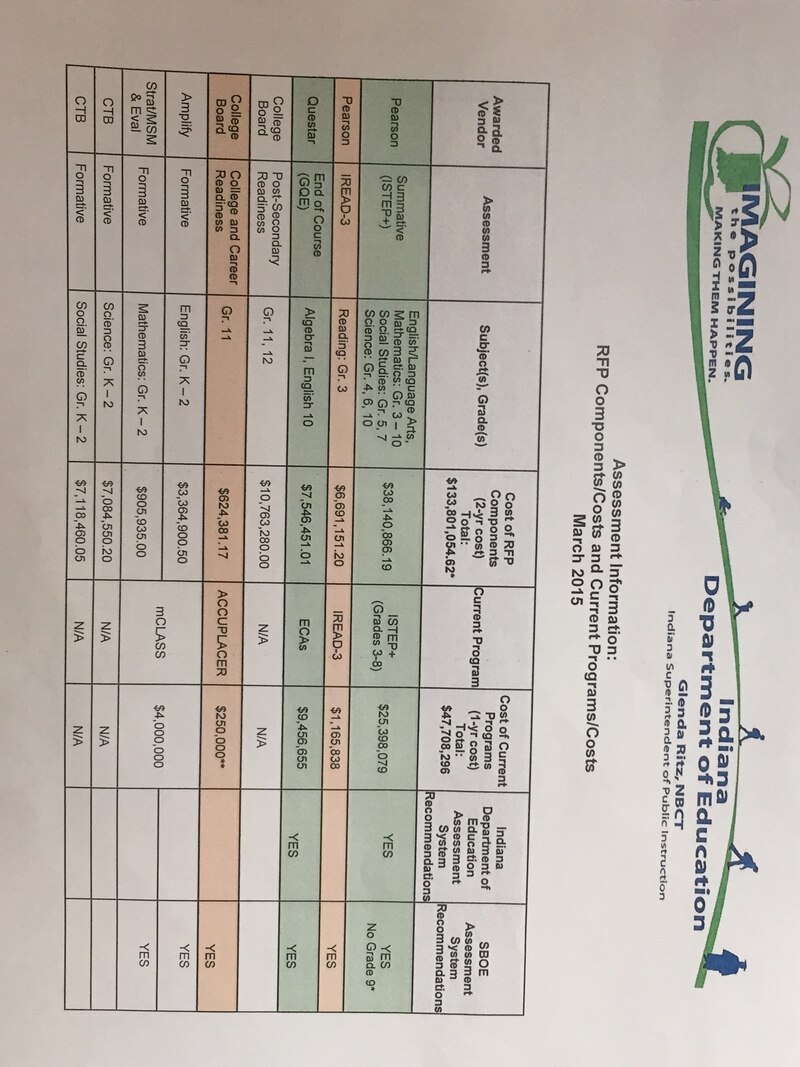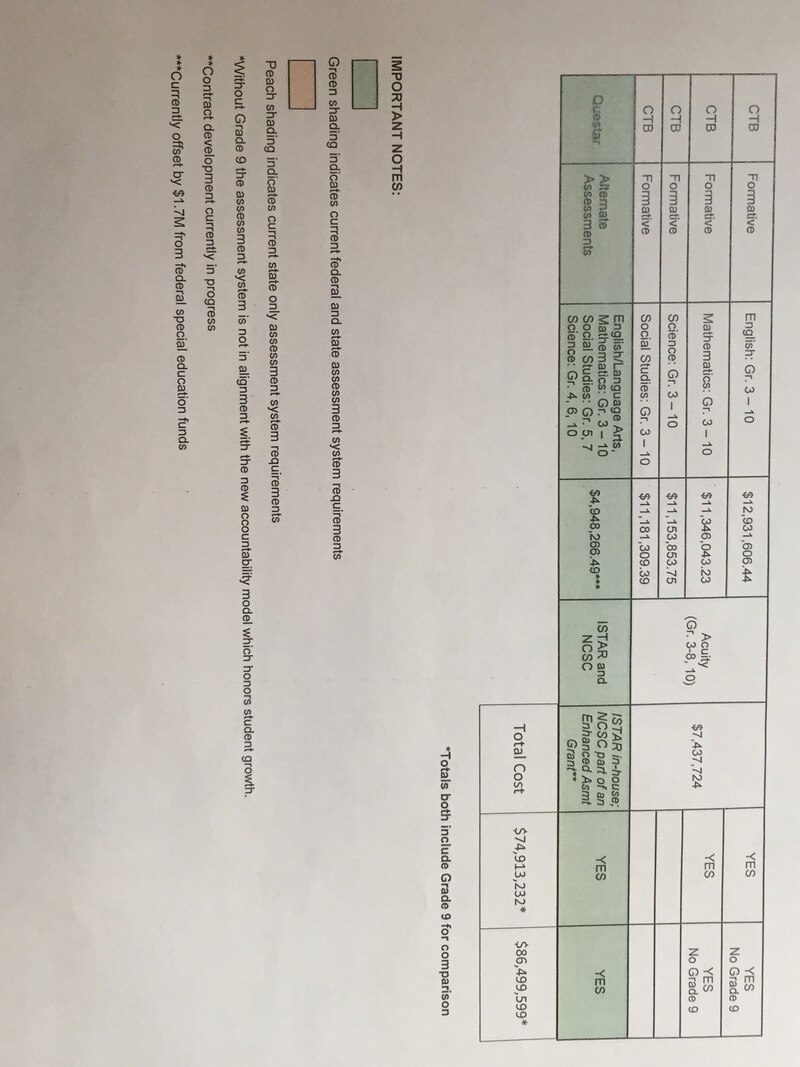Indiana might not be able to completely avoid more expensive state ISTEP tests in the future, but a revised plan today from state Superintendent Glenda Ritz would save big money for now, cutting the cost by almost half from the two-year $134 million estimate she presented in December.
Ritz told the Senate Appropriations Committee she now thinks state tests could be delivered for about $75 million over two years. After that, she said she’d back an effort proposed in Senate Bill 566, authored by Sen. Luke Kenley, R-Noblesville, that would switch Indiana to a national “off-the-shelf” test beginning in 2016-17, such as the Iowa Test of Basic Skills or one by the Northwest Evaluation Association.
“I would like a simplified assessment system like Senate Bill 566,” Ritz said. “How we get there is what I really want to talk about today and how we can move towards that.”
Ritz’s stripped-down plan includes:
- An ISTEP test in math and English for grades 3 to 10, social studies for grades 5 and 7, and science for grades 4, 6 and 10. Cost: $38,140,866.
- End-of-course exams in high school Algebra and sophomore English. Both high school tests would eventually be phased out under her plan. Cost: $7,546,451.
- Practice tests in English and math for grades 3 to 10 to help teachers evaluate student growth. Cost: $24,277,649.
- An alternate ISTEP test for students with special needs. Cost: 4,948,266.
- Total cost: $74,913,232.
Currently, ninth-graders don’t take ISTEP, but many take the Algebra exam that year. It’s important to bring ninth grade into the testing program, Ritz said, because the state’s A-to-F school grading system works best when all students are tested in grades 3 to 10.
It’s difficult, and less accurate, to measure a student’s test score gain over two years and two different types of tests, she said.
“We value growth over performance, and in order to have a good growth measurement system, we have to include grade nine,” Ritz said. “Currently, they go from grade eight ISTEP to a whole different test.”
Ritz’s plan has fewer proposed pieces than an approach suggested Wednesday by Indiana State Board of Education member Sarah O’Brien. O’Brien’s plan wouldn’t include ninth-grade ISTEP or English and math practice tests for that grade.
In both proposals, an ISTEP test for grades 3 to 8, high school exams and the alternate test are required by federal law.
But O’Brien’s plan also keeps the third-grade reading test, IREAD, which Ritz wants to cut. O’Brien also includes a test required by state law designed to help struggling students by identifying where they are falling short. Ritz proposes dropping that exam. Ritz says neither test is necessary, and they add a financial burden.
With those extras, O’Brien’s plan would cost about $86 million, according to the education department.
“When you have an assessment system that actually tells you where your kids are performing, and you know how they’re doing and you know where you’re taking them, then remediation can happen easily at each grade level,” Ritz said. “Even sometimes within the funding mechanism the school already has.”
Ritz said these changes could be made by working with the testing companies that won bids to create Indiana’s exams so that the resulting tests are cheaper, adhere to state law and don’t add extra time.
Reading in particular has been a focus of state board debates about testing. Board members have repeatedly reminded Ritz both they and the members of Indiana’s Education Roundtable have told her they didn’t want the state to collect additional reading data through ISTEP that would allow those tests to set a numerical reading level for each student each year.
But Ritz and other educators have argued a reading level would be much more helpful information for teachers than IREAD. Dropping IREAD would also save money and reduce the amount of time third-graders spend on tests, Ritz said.
“We have an opportunity with the new ISTEP to eliminate the additional test at third grade and gather reading not only at grade three, but to gather reading data for grades three through 10,” Ritz said. “Reading is a very strong indicator of success in your schoolwork.”
Ritz told Kenley, the committee’s chairman, she would also look into a pilot program stemming from his bill to begin to figure out what off-the-shelf tests might work best if Indiana were to adopt one in place of ISTEP. She also said she would ask educators across the state whether future tests need to include as many short- and long-answer questions, which tend to be more time consuming and costly.
“You are the ultimate decision-makers regarding this assessment system,” Ritz told the committee. “So I welcome the conversation.”
The Indiana Department of Administration awarded the bid for the 2015-16 ISTEP test to the British testing company Pearson over the company that traditionally has created the test, CTB-McGraw Hill. California-based CTB-McGraw Hill had a four-year, $95 million contract to create ISTEP that expired last year.
List ViewSwitch to list view
SlideshowSwitch to slideshow view
ReplayBack to Beginning
back1 of 2next

Start Slideshow







